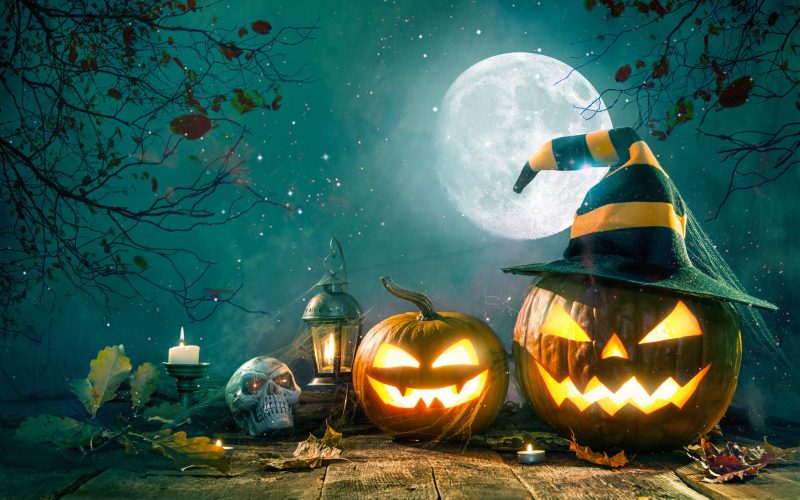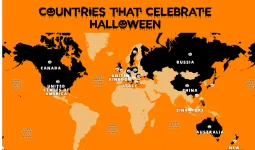Is Halloween one of your favorite holidays? If that’s the case, let’s see how much you know about this Samhain celebration, which means “Summer Ends.”
You’ve well come to the right place if you want to add some seasonal flavor to your repertoire.
Sure, you’ve got your costume picked out, spooky snacks and Halloween candy purchased (are hidden where you won’t eat it all before the big night), and a favorite scary movie cued up and ready to push “play” — but how much do you know about Halloween?
Everyone’s favorite Halloween holiday has developed over the years from a religious feast to a night dedicated to mischief and mayhem to one of the most commercialized festivals of the year.
Apologies for Valentine’s Day. Halloween has a rich history and various traditions.
It is an annual celebration observed in different countries on October 31. Halloween has its origin in the ancient Celtic festival of Samhain.
During Halloween, people dress in different costumes and are seen having fun. There are some facts about Halloween that you may have never known.
Here are some;
1. Origin
Halloween is not everyone’s favorite holiday, but it appears to be growing in popularity.
This annual celebration of all things ghostly and spooky has a long and fascinating history.
The origin of Halloween is one of the crucial facts about Halloween, and the source can be traced back to the ancient Celtic festival of Samhain.
Do you know how to say Samhain? You may believe you do, but chances are you’re mistaken. The correct pronunciation is “SAH-win” as opposed to “Sam-hane.”
Samhain was celebrated by the Celts over 2,000 years ago in the area now known as Ireland, the United Kingdom, and northern France.
The festival marks the end of the harvest period and the beginning of winter.
The Celts believed that the veil between the living and the dead was the thinnest at this time of year, allowing spirits to pass through and walk among the living.
They then attempted to fend off ghosts and evil spirits by using sacrificial bonfires and, yes, costumes and masks to lure the spirits to go.
Some critical aspects of Samhain include;
Costumes and Disguises

People would dress in costumes and disguise themselves to avoid or confuse evil spirits.
Halloween costume wear is a joyful and enjoyable tradition that is thought to have originated from the belief that during this time, spirits and otherworldly beings visited Earth.
Bonfires
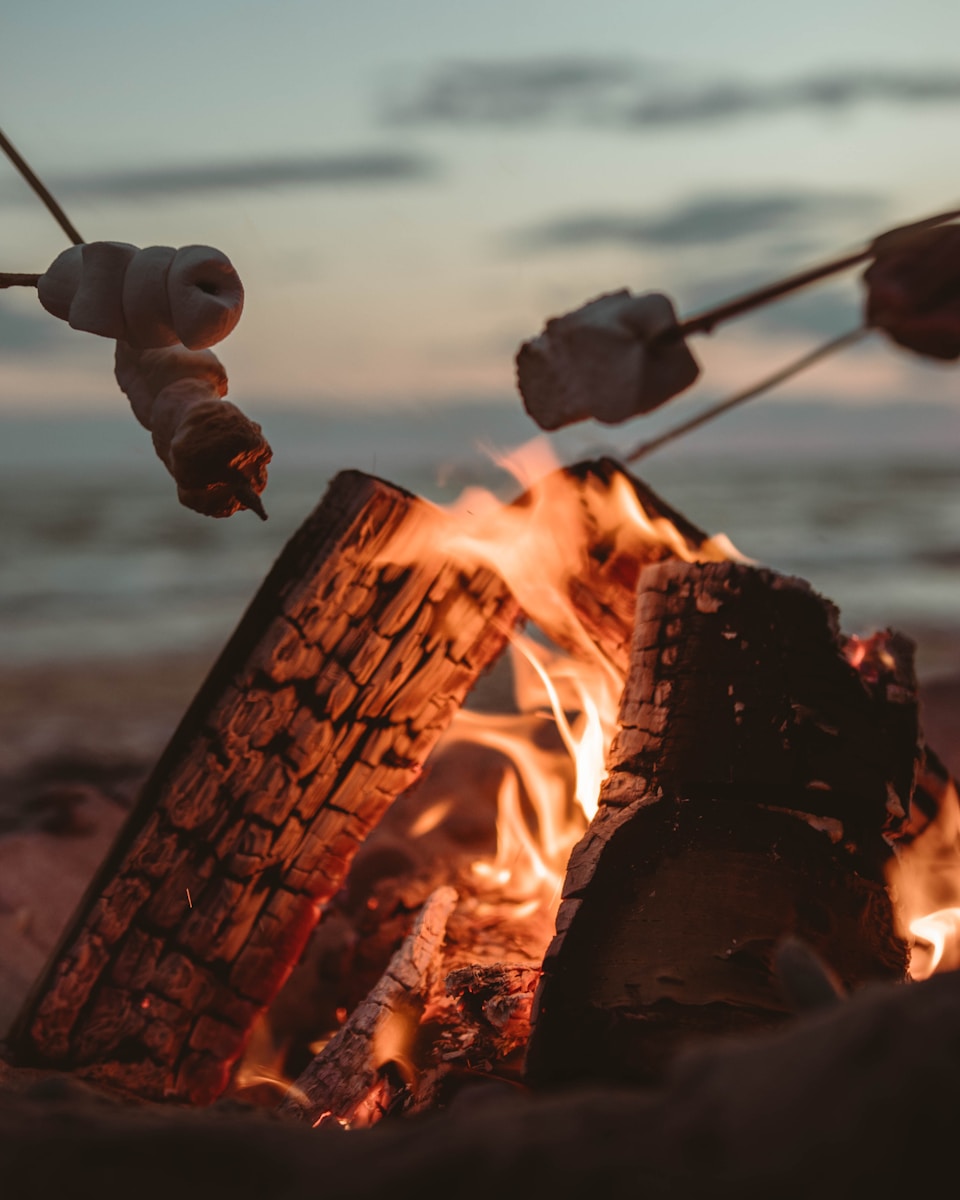
Bonfires were a central element of the celebration. The Celts would gather around the fires to offer sacrifices, and the flames were believed to have protective and purifying powers. This aspect was one of the exciting facts about Halloween.
Feasting
Samhain was also a time for feasting, as the community would come together to share food and celebrate the end of the harvest. Food was always surplus during this period.
One of the facts about Halloween also extends to when the Roman Empire conquered the Celtic territories, elements of Samhain were incorporated into the Roman festivals of Feralia (commemorating the passing of the dead) and Pomona (honoring the Roman goddess of fruit and trees).
Over time, as Christianity spread across the Roman Empire, the church sought to Christianize pagan celebrations.
In the 8th century, Pope Gregory III designated November 1 as All Saints’ Day to honor saints and martyrs.
The night before, October 31, became known as All Hallows’ Eve. Over the centuries, the name evolved into Halloween.
Halloween was brought to North America by Irish and Scottish immigrants in the 19th century, and it gradually transformed into the secular, community-oriented event that we know today.
The costumes, trick-or-treating, and pumpkin carving traditions have become central to the modern celebration of Halloween.
2. All Hallow’s Eve
“All Hallow’s Eve” is an alternative name for Halloween. Hallow’s Eve is one of the early facts about Halloween.
The term “Hallow” is derived from the Old English word ” halga,” meaning “holy” or “saint,” and “eve” refers to the evening before a particular event.
Therefore, “All Hallow’s Eve” translates to the evening before All Saints’ Day, celebrated on November 1.
The term has historical roots in the Christian calendar. All Saints’ Day, or All Hallows’ Day, is set aside to honor all saints and martyrs.
The night before, October 31, came to be called All Hallows’ Eve, eventually evolving into Halloween. Over time, Halloween has developed into a secular and widely celebrated occasion.
It is marked by various customs and traditions, such as dressing up in costumes, trick-or-treating, and creating festive decorations.
Despite its Christian origins, Halloween has become a cultural phenomenon with diverse activities and observances.
3. Jack-O’-Lanterns
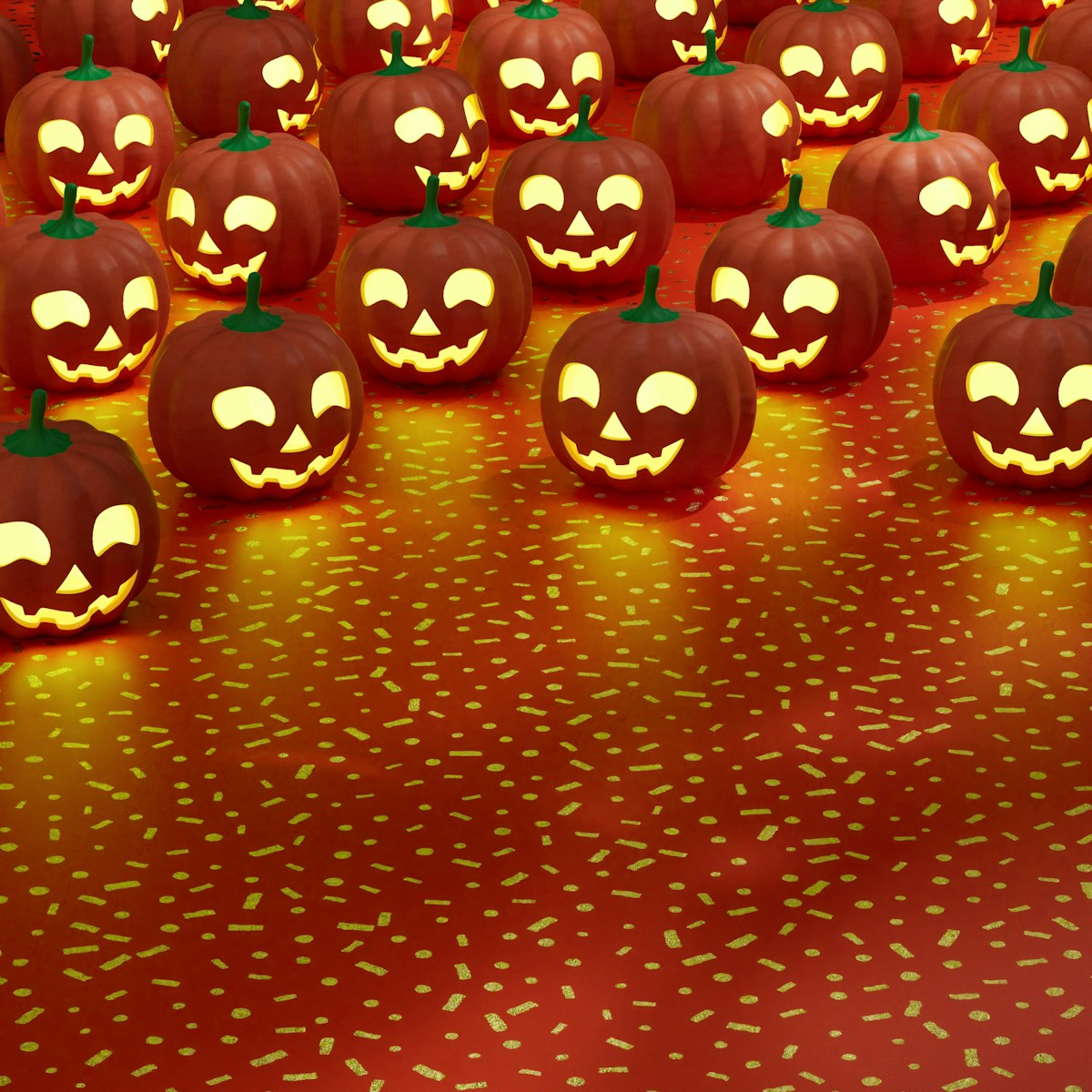
One of the common facts about Halloween is the Jack-o-lantern. A Jack-o’-lantern is a carved pumpkin typically associated with the Halloween season.
The tradition of carving pumpkins into faces and placing a candle inside is believed to have originated from an Irish folklore tale about a man called Stingy Jack.
According to the legendary history, Jack tricked the devil several times and, as a result, was neither allowed into heaven nor hell when he died.
Instead, he was condemned to roam the Earth with only a burning coal inside a carved turnip to light his way.
When Irish immigrants brought this tradition to North America, they found that pumpkins were more readily available and accessible to carve than turnips.
As a result, the pumpkin became the vegetable of choice for creating Jack-o’-lanterns.
How You Can Make a Jack-o’-lantern?
- Choose a fresh, firm pumpkin with a flat bottom, making it stable for carving.
- Cut a hole around the pumpkin’s stem to create an opening to scoop the seeds and pulp.
- Use a spoon or pumpkin scooper to remove the seeds from the pumpkin.
- Draw a face on the pumpkin with a marker or use a stencil for guidance. Standard designs include spooky or happy faces with eyes, a nose, and a mouth.
- Carefully carve along the marked lines using a pumpkin carving kit or carving tools. Take your time and use a sawing motion for better control.
- Lace a candle or battery-operated LED light inside the carved pumpkin. If using a real candle, be cautious and never leave it unattended.
- Once carved and lit, display your Jack-o’-lantern in a prominent location, such as your doorstep or windowsill, to celebrate Halloween.
Jack-o’-lanterns are a festive and fun tradition during the Halloween season, adding a spooky and decorative element to the festivities.
Many people also participate in pumpkin carving contests and other creative activities related to these iconic symbols of Halloween.
4. Trick-or-Treating
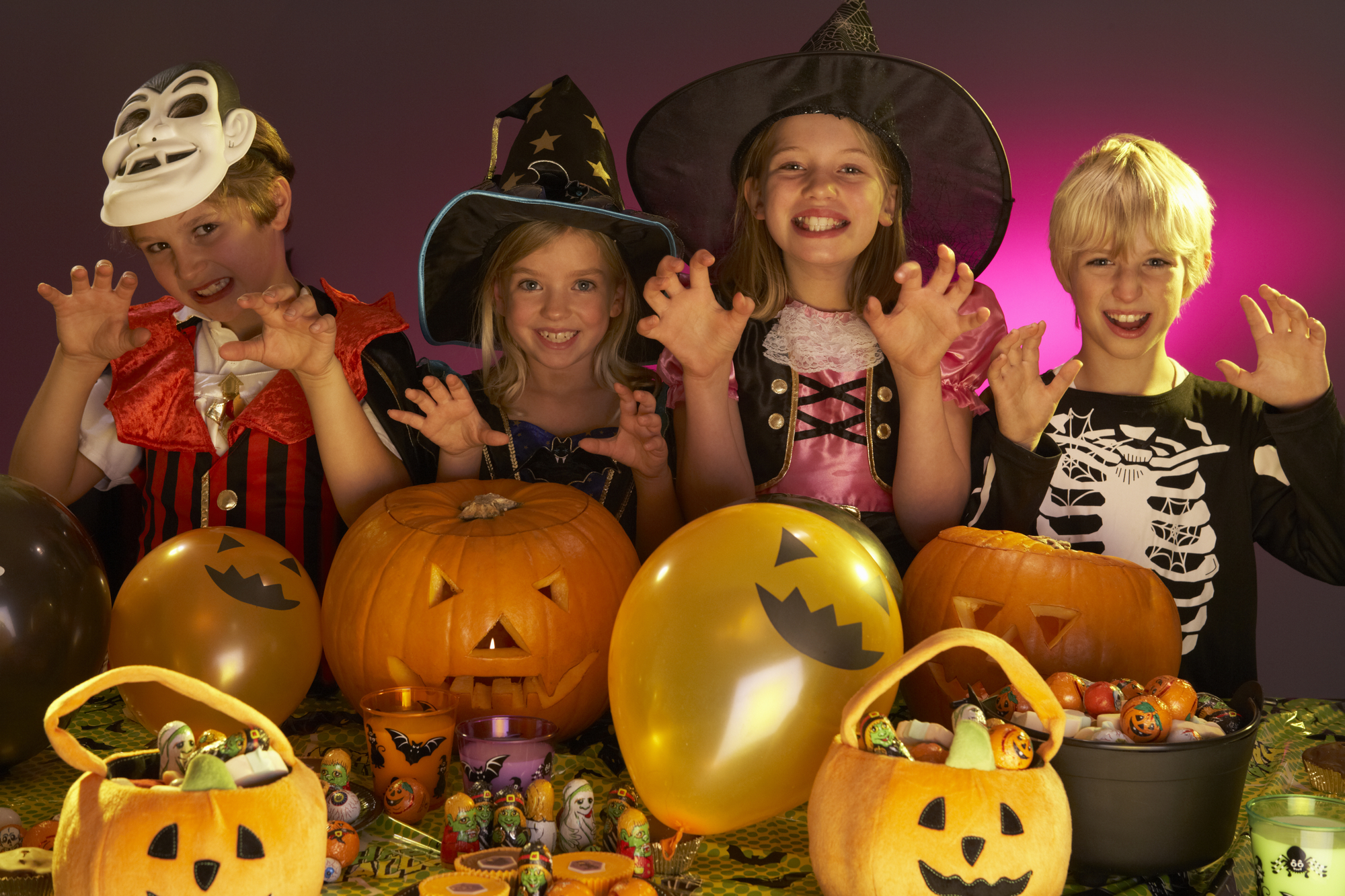
Trick-or-treating is a popular Halloween tradition in which children, typically dressed in costumes, go from house to house in their neighborhood, asking for candy or other treats.
Here’s how the tradition generally works;
- Children often spend time choosing or making costumes based on their favorite characters, monsters, or other themes.
- Trick-or-treating usually occurs on Halloween evening, typically between 5:30 pm and 9:30 pm, though this can vary by location.
- Children, accompanied by parents or guardians, approach houses that are well-lit and often decorated for Halloween.
- At each house, children ring the doorbell or knock on the door. When the door opens, they often say, “Trick or treat!” as a playful demand for candy.
- Homeowners then provide the trick-or-treaters with a treat, usually candy, but sometimes small toys, stickers, or other goodies.
- As one of the facts about Halloween, it is customary for children to say “Thank you” after receiving their treats.
- Trick-or-treaters then move on to the next house and repeat the process.
- Parents and guardians often emphasize safety rules, such as staying on well-lit paths, watching for traffic, and checking treats before consumption.
- Some households go out with Halloween decorations, creating haunted houses or spooky scenes in their front yards to enhance the festive atmosphere.
- Some communities have organized events, such as trunk-or-treat gatherings in parking lots, where children can visit decorated cars and collect treats in a controlled environment.
Both trick-or-treaters and homeowners need to prioritize safety during Halloween.
This includes using reflective materials on costumes, carrying flashlights, and being cautious when crossing streets.
Additionally, homeowners may choose not to participate in trick-or-treating by leaving their porch lights off or by displaying a sign indicating their preference.
Trick-or-treating is a cherished tradition that allows communities to come together in a fun and festive way to celebrate Halloween.
The practice of trick-or-treating has medieval roots. It evolved from the “souling” custom where poor people would go door-to-door on Halloween (November 1), offering prayers for the dead.
5. Costumes
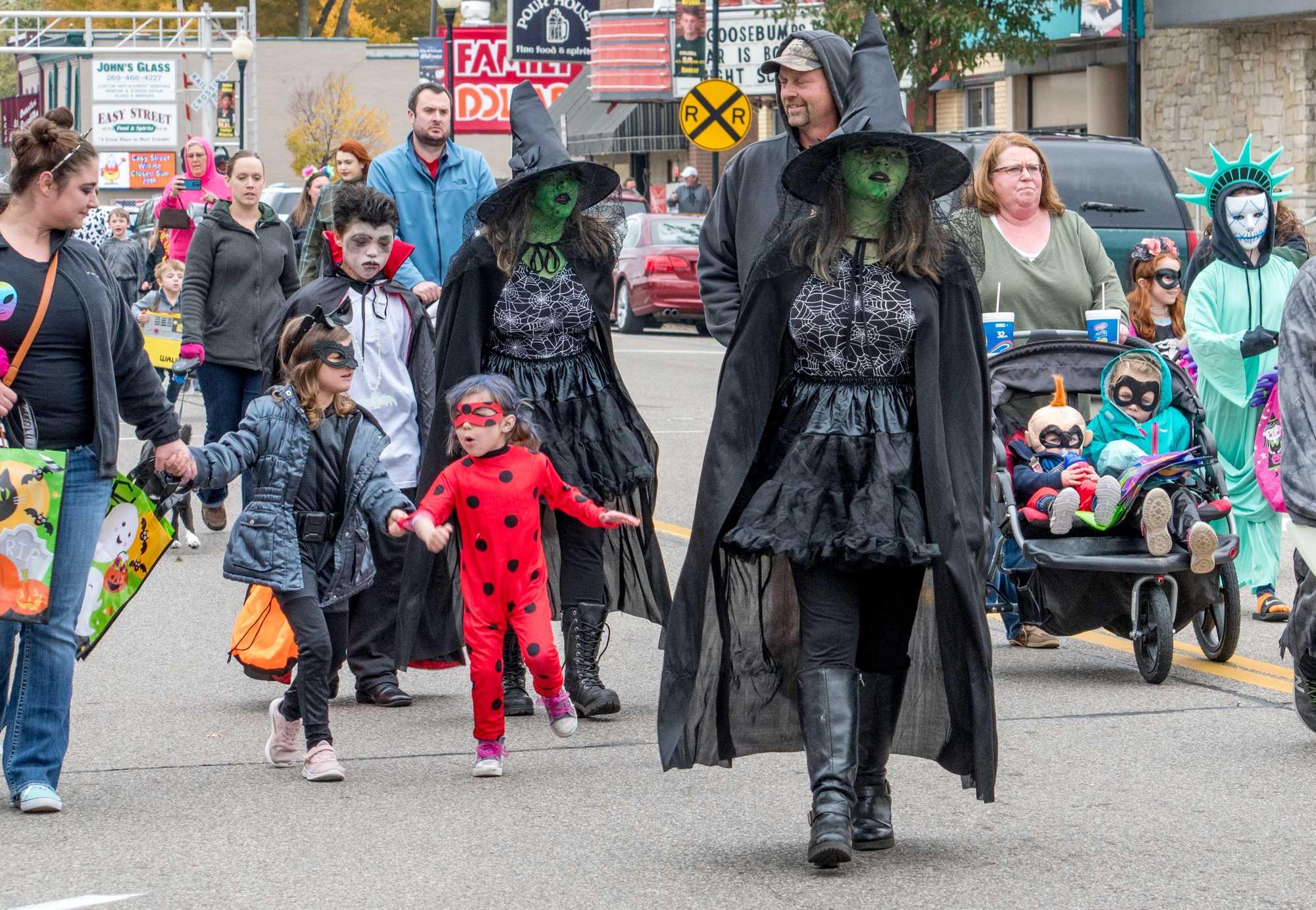
Costumes are a central and festive aspect of Halloween celebrations. People of all ages enjoy dressing up in creative and sometimes spooky outfits to participate in various Halloween activities.
During Halloween, people often choose costumes based on various themes, including popular characters from movies, TV shows, books, historical figures, mythical creatures, and more.
The possibilities are vast and can be as creative as one’s imagination allows.
Some individuals prefer to create their costumes from scratch, using sewing skills and crafting materials.
Others opt for the convenience of store-bought costumes, which come in a wide range of styles and sizes.
Group costumes, where friends or family members dress in coordinated or matching outfits, are a popular and fun trend.
This allows for camaraderie and often adds extra creativity to the celebration.
Kids often choose costumes based on their favorite characters, superheroes, princesses, animals, or other fun and whimsical ideas.
Halloween allows children to express their creativity and imagination through their chosen costumes.
Adults also participate enthusiastically in Halloween costume traditions. Costumes range from humorous and lighthearted to spooky or even elaborate and theatrical.
In addition, DIY (Do It Yourself) costumes allow unique and personalized creations.
Some popular DIY costume ideas include animals, historical figures, pun-based costumes, and clever wordplay.
Halloween is known for its association with spooky and scary themes.
Costumes like witches, vampires, zombies, ghosts, and monsters are classic choices for those who enjoy a more frightening aesthetic.
Costumes are often inspired by current trends, memes, or pop culture references that are always popular.
This could include dressing up as characters from recent movies, TV shows, or viral moments.
Many Halloween celebrations include costume parties or contests where participants can showcase their creativity and sometimes win prizes for the best costumes.
When selecting or creating a costume, it’s essential to consider safety factors.
This includes ensuring costumes are flame-resistant, incorporating reflective materials for visibility at night, and choosing comfortable footwear.
6. Black Cats
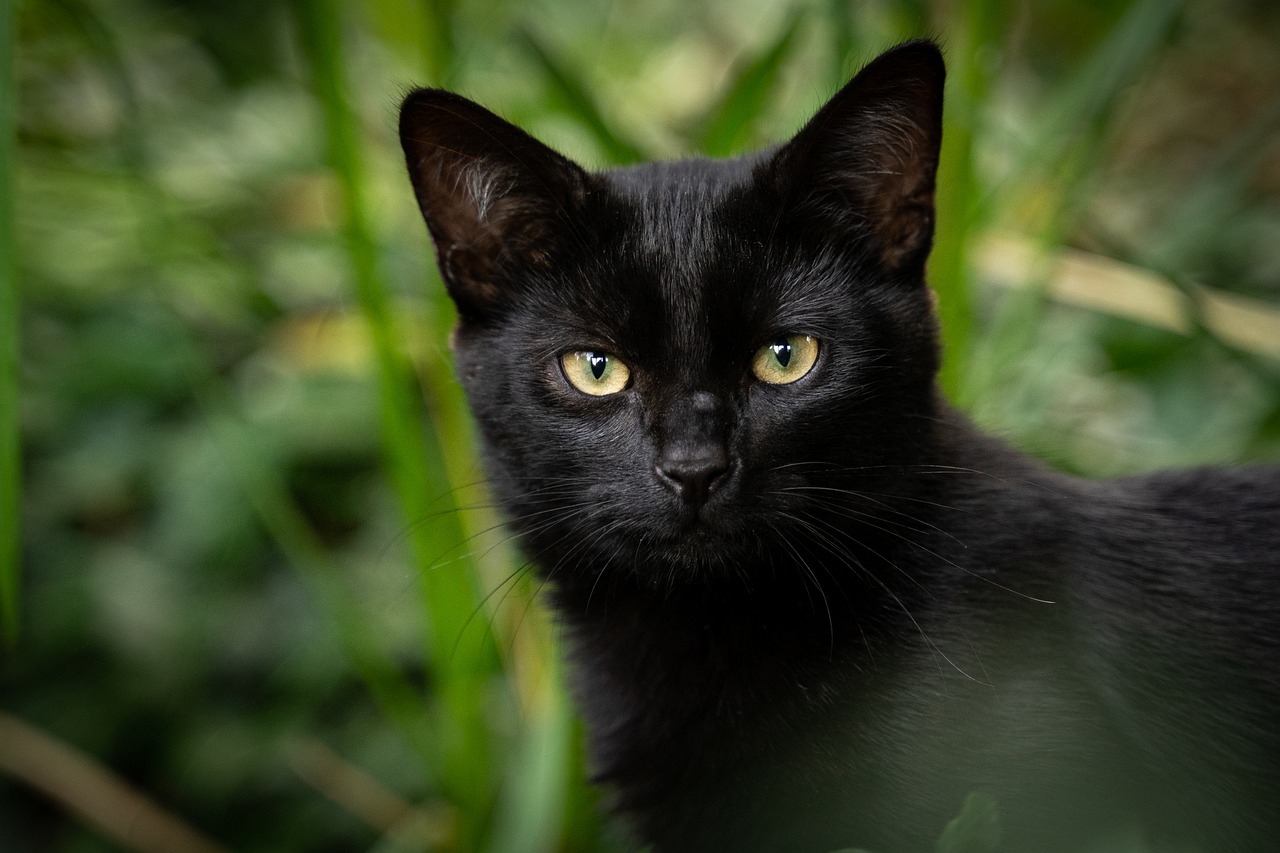
Black cats have long been linked with superstitions and folklore, and their presence is often heightened during Halloween.
They have been the subject of various superstitions throughout history.
In some cultures, they are considered symbols of good luck; in others, they are associated with bad luck, witchcraft, or supernatural omens.
In medieval Europe, black cats were often linked to witches and believed to be their familiars—supernatural entities that aided witches in their magical practices.
This association has contributed to the idea of black cats being connected to witchcraft.
Black cats are often used as Halloween symbols, representing the holiday’s mysterious and eerie atmosphere.
Images of black cats are commonly featured in Halloween decorations, costumes, and various media.
Some animal shelters and advocacy groups use Halloween to raise awareness about black cats’ positive qualities and dispel superstitions.
There may be adoption events specifically focused on finding loving homes for black cats during the Halloween season.
Black cats are a famous choice for Halloween costumes for adults and children. The ensemble often features cat ears, a tail, and sometimes face paint to mimic a cat’s whiskers.
It’s important to note that superstitions about black cats causing harm or being associated with evil are unfounded and rooted in historical misunderstandings.
In reality, like any other feline companions, black cats can make loving and beautiful pets.
Many people embrace the mystique of black cats during Halloween, appreciating their unique and elegant appearance while understanding that these superstitions are not based on fact.
7. Candy Corn
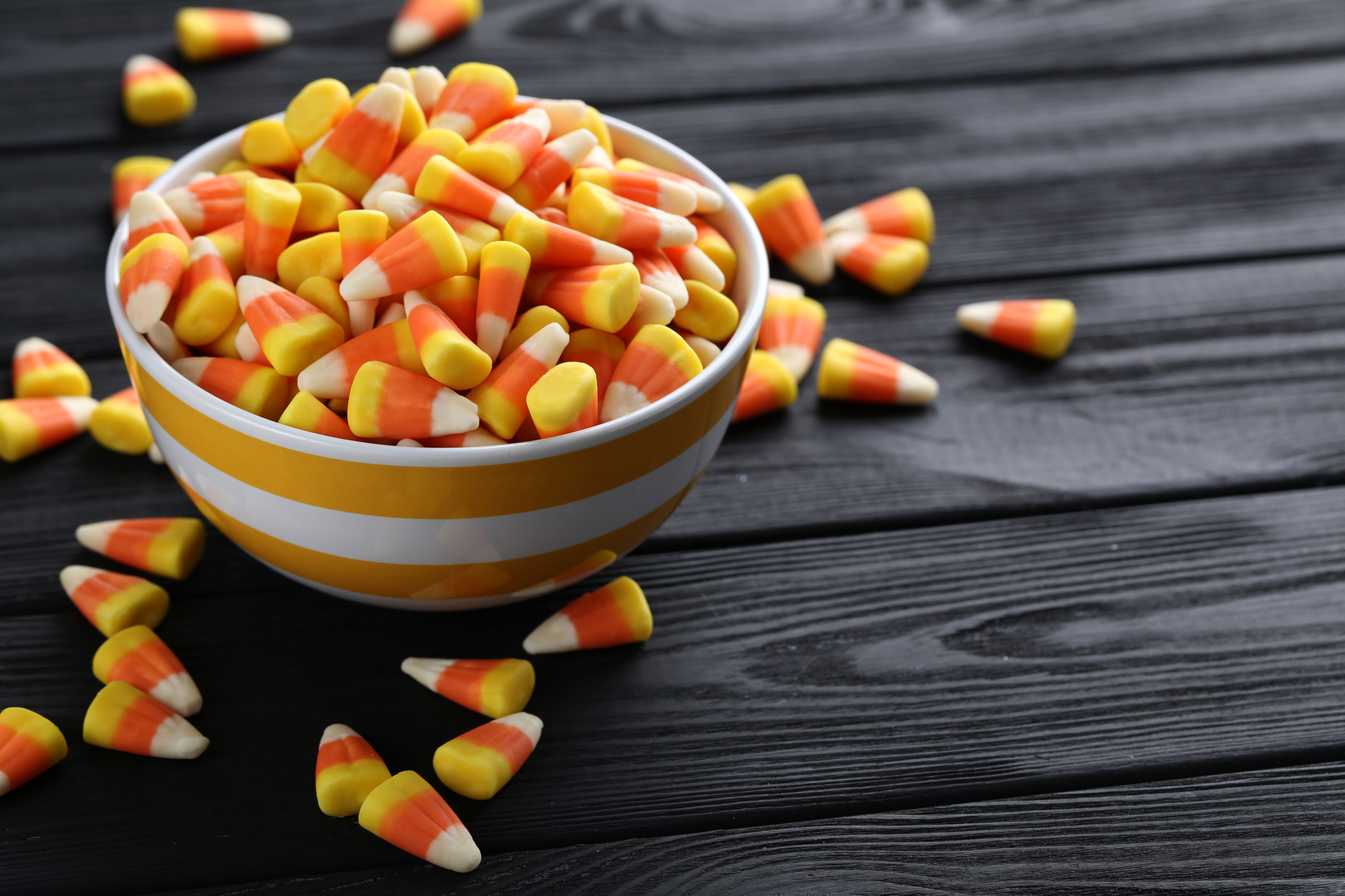
Candy corn is often considered one of the most iconic and traditional Halloween candies.
Its distinct tri-color pattern, with yellow at the base, orange in the center, and white at the tip, is easily recognizable.
It is widely available in the weeks leading up to Halloween. It is a seasonal treat that is specifically associated with the autumn and Halloween seasons.
Candy corn is enjoyed as a sweet treat and a decorative element during Halloween.
It is often featured in tabletop displays, as part of centerpieces, and as a thematic element in various decorations.
Many households and businesses feature candy corn in bowls as Halloween decorations.
These bowls are often placed by the front door or in common areas to offer a sweet treat to visitors and trick-or-treaters.
It is sometimes mixed with other seasonal candies, such as autumn-colored M&M’s or peanuts, creating festive snack mixes.
These mixes are popular for Halloween parties and gatherings. It is also used as an ingredient in various Halloween-themed recipes.
For example, it may be incorporated into cookies, cupcakes, or other sweet treats to enhance the seasonal flavor.
Candy corn is a divisive treat; people either love or dislike it. Some appreciate its sugary, honey-like flavor and unique texture, while others find it too sweet or waxy.
The debates about its taste and texture continue to add a playful element to the Halloween candy experience.
Lastly, Candy corn, a popular Halloween treat, was invented in the 1880s by George Renninger of the Wunderle Candy Company. Its original name was “Chicken Feed.
8. Halloween Colors
The traditional colors associated with Halloween are orange and black, with accents of white and sometimes purple or green.
These colors contribute to the festive and spooky atmosphere of the holiday.
Orange

Orange is the most used color in Halloween decor. Orange color is one of the significant color facts about Halloween. It symbolizes the autumn season.
It represents fall foliage, pumpkins, and the harvest. Jack-o’-lanterns, pumpkin decorations, and various Halloween-themed items prominently feature orange.
Black

Black is often represented with darkness, mystery, and the unknown. In the context of Halloween, it means the night, shadows, and the supernatural.
Black is commonly used for Halloween decorations, costumes, and themed items.
It adds an element of spookiness and is often featured in witches’ hats, cats, bats, and other Halloween-related motifs.
White
White during Halloween is associated with ghosts, skeletons, and other supernatural elements. It can also represent purity or the magical realm.
White is often used as an accent color in Halloween decorations, mainly depicting ghosts, skulls, bones, and other eerie imagery. It contrasts with the darkness of black and adds a chilling effect.
Purple and Green
Purple and green are secondary colors associated with Halloween, adding variety and depth to the color palette.
Purple is often associated with magic and mysticism, while green can represent monsters, witches, and goblins.
Both colors are commonly found in Halloween-themed decorations, costumes, and candies.
The combination of orange and black is particularly iconic, and you’ll see it used in various ways during the Halloween season.
The vibrant contrast of these colors adds to the visual excitement of the holiday.
Whether it’s the warm harvest tones of orange or the mysterious darkness of black, these colors collectively create Halloween’s distinctive and festive aesthetic.
9. Samhainophobia
This is also one of the basic facts about Halloween, which is the fear of Halloween. Some people may experience anxiety or fear related to Halloween activities.
Samhainophobia is derived from “Samhain,” a Gaelic festival that marks the end of the harvest season and the beginning of winter.
It is often associated with Halloween, as the modern celebration has some roots in the ancient Celtic festival of Samhain.
Phobias, in general, are characterized by an intense and irrational fear of a specific object, activity, or situation.
People with Samhainophobia may experience anxiety, panic attacks, or other distressing symptoms related to the Halloween season or the cultural and historical associations with Samhain.
As with any specific phobia, treatment options may include cognitive-behavioral therapy (CBT), exposure therapy, or other therapeutic approaches.
If someone is experiencing significant distress due to Samhainophobia or any other phobia, it is advisable to seek the help of a mental health professional for evaluation and support.
10. Halloween in Pop Culture
Halloween has become a significant and celebrated cultural phenomenon, influencing various forms of pop culture.
It has left its mark on movies, television shows, music, literature, and fashion.
Here are some facts about Halloween, which is represented in pop culture;
Halloween Movies
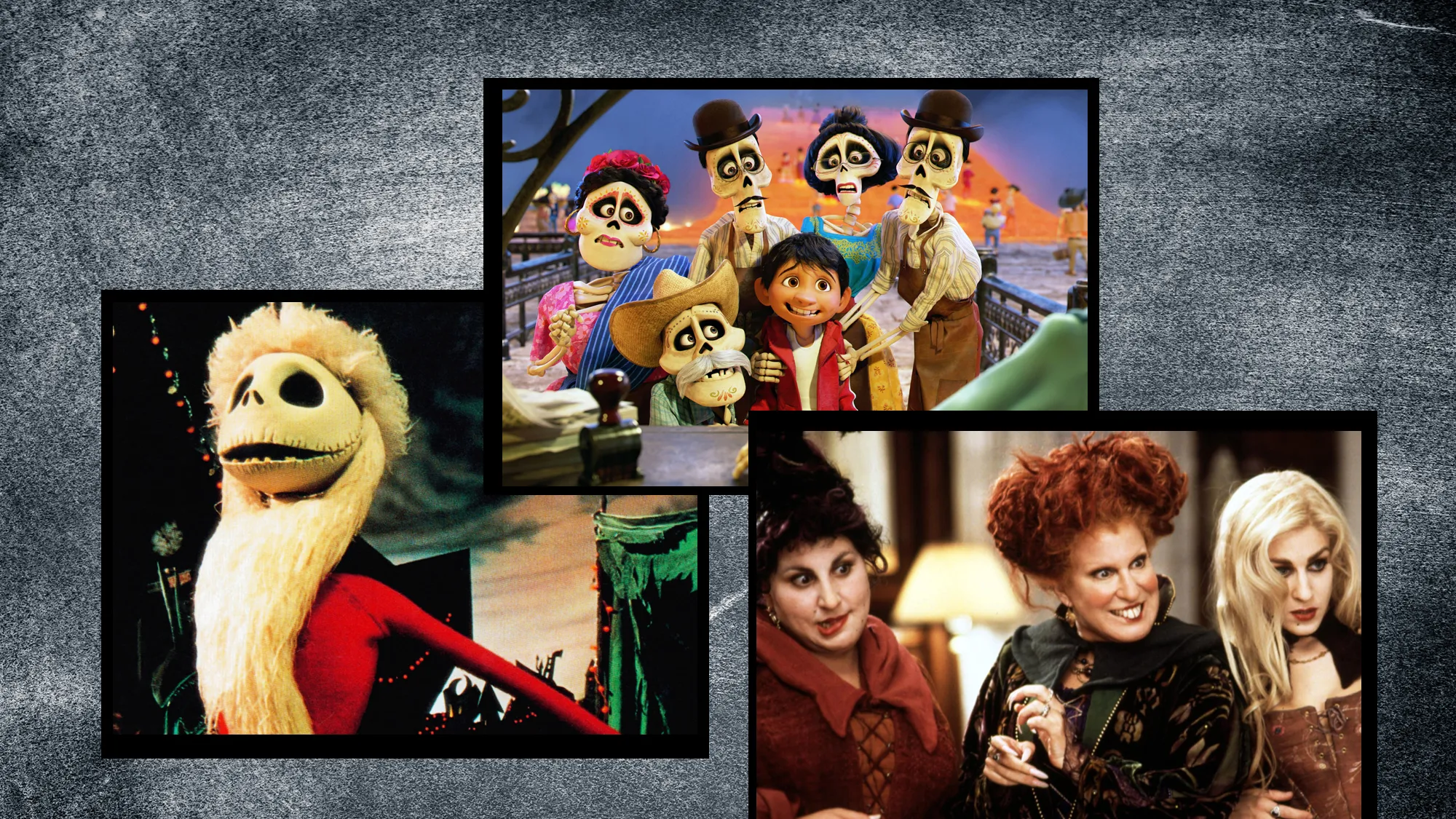
Classical Films like “Halloween” (1978), directed by John Carpenter, and other slasher films have become iconic in the horror genre.
Family-friendly movies like “Hocus Pocus” (1993), “The Nightmare Before Christmas” (1993), and “It’s the Great Pumpkin, Charlie Brown” (1966) have also become beloved family traditions.
Television Specials
Many animated series, including “The Simpsons,” “South Park,” and “SpongeBob SquarePants,” have Halloween-themed episodes.
Also, Various TV shows, from classic sitcoms to modern dramas, often have Halloween episodes showcasing characters in costumes and exploring spooky or humorous storylines.
Halloween Music
Music such as “Monster Mash” by Bobby Pickett and the Crypt-Kickers is a classic Halloween song that has become a staple.
Also, with its iconic dance and horror elements, Michael Jackson’s “Thriller” music video is often associated with Halloween.
Literature
Authors, especially in the horror and fantasy genres, often release Halloween-themed books or stories. Classic literature also features spooky tales that are revisited during the season.
Costumes and Fashion
Halloween influences fashion trends, inspiring clothing lines and accessories with spooky or gothic themes. Retailers often release Halloween-themed clothing items.
Haunted Attractions
The tradition of visiting haunted houses or participating in haunted attractions during Halloween has become popular entertainment.
Halloween Parties
Halloween parties and events often become social media sensations, with people sharing photos of their costumes and celebrations. Trends like group costumes and DIY creations have gained popularity.
Cultural Icons
Characters like Jack Skellington from “The Nightmare Before Christmas” or the Sanderson Sisters from “Hocus Pocus” have become Halloween-associated cultural icons.
Halloween Decorations

Yard Displays elaborate and spooky yard displays, sometimes synchronized to music or featuring animatronics, have become a form of artistic expression during the Halloween season.
One of the most significant facts about Halloween is its vast influence on pop culture.
Its themes of dressing up, spooky tales, and community celebrations continue to be embraced and reinvented across various media platforms.
The holiday has become a time for creativity, self-expression, and shared traditions.
11. Global Celebration
While Halloween is traditionally associated with Western cultures, particularly in the United States, Canada, and parts of Europe, however, its celebration has been growing in popularity globally in recent years.
Halloween is widely celebrated in the United States and Canada, where traditions include trick-or-treating, costume parties, haunted houses, and decorating homes with spooky themes.
In urban areas in India, it is also celebrated with parties, costume events, and themed gatherings, which is trendy among younger generations.
Halloween has Celtic roots, and in Ireland, it is celebrated with traditional activities such as bonfires, costume parties, and games.
In the United Kingdom, there has been an increase in the adoption of Halloween customs.
Also, in Mexico, the Day of the Dead (Dia de los Muertos) is celebrated around the same time as Halloween.
While it has different cultural significance, it involves remembering and honoring deceased loved ones with colorful altars, parades, and festive gatherings.
Halloween has additionally gained popularity in Australia and New Zealand, where children participate in trick-or-treating, and Halloween-themed events are organized.
However, it must still be deeply rooted in tradition in some Western countries.
This celebration has become increasingly popular in Japan, especially in urban areas like Tokyo.
Costume parties, parades, and themed events are familiar, and many stores decorate their storefronts for the occasion.
South Korea is also not left out in Halloween celebrations, particularly in major cities like Seoul.
Costume parties, club events, and themed decorations are part of the festivities.
Just like in South Korea, Halloween has also gained popularity in the Philippines.
One of the facts about Halloween is that it may not be a traditional celebration in many parts of the world.
Still, its popularity has grown as a globalized culture allows for the exchange and adoption of various traditions.
People worldwide now have the opportunity to participate in Halloween festivities, whether through costume parties, themed events, or cultural exchanges.
12. Second Largest Commercial Holiday
One of the facts about Halloween is that it ranks as the second-largest holiday.
Christmas is typically considered the most significant commercial holiday in many parts of the world.
However, Halloween often ranks as the second-largest commercial holiday in consumer spending.
The commercial success of Halloween is attributed to various factors, including the sale of costumes, decorations, party supplies, and candy.
Halloween has evolved into a significant retail event in the United States and several other countries, with consumers spending billions of dollars on Halloween-related products and activities each year.
It’s important to note that commercial rankings can vary depending on the region and cultural traditions.
While Christmas and Halloween are major commercial holidays in many Western countries, other celebrations, such as Chinese New Year, Diwali, or Valentine’s Day, may take precedence in different parts of the world.
13. Halloween Costumes for Pets
Dressing up pets in Halloween costumes has become a popular and adorable tradition.
When selecting an outfit for your furry friend, it’s essential to prioritize their comfort and safety.
Some creative and fun Halloween costume ideas for pets include;
- A small witch or wizard hat with a matching cape can transform your pet into a magical companion.
- Pumpkin costume, complete with a hat or headpiece resembling a pumpkin stem, is also a classic and festive choice.
- Dress your pet as a superhero with a cape, mask, and perhaps a logo on their back. Superdog or Superkitty to the rescue!
- Turn your pet into a cute insect with a bumblebee or ladybug costume. These often come with wings and antennas.
- A hot dog costume is a humorous and classic choice for dogs. It’s a playful way to celebrate the occasion.
- A pirate hat, an eyepatch, and perhaps a tiny sword can give your pet a swashbuckling look.
- Transform your pet into a prehistoric creature with a dinosaur costume featuring scales and a dino headpiece.
- Adorn your pet in a royal outfit with a tiara or crown. A regal cape can complete the look.
- Other Halloween costume ideas for your pets include ghosts, Wizards or sorcerers, Football Players, etc.
Additionally, avoid using costumes with small parts that could be chewed or ingested.
Always prioritize the safety and well-being of your furry friend while enjoying the Halloween festivities.
Lastly, consider your pet’s comfort and ensure that the costume allows for easy movement and breathing and doesn’t cause any distress.
If your pet seems uncomfortable, it’s best to forgo the costume.
14. Halloween in Space
On the International Space Station, astronauts celebrate Halloween.
They frequently upload pictures and videos of their space-themed decorations and outfits when they are in microgravity.
These outfits might be frightening, spooky, or just incredibly creative. Everyone enjoys seeing pictures from past Halloweens in space, and they often anticipate the costumes of the future.
Though there are no goblins, ghouls, or trick-or-treaters knocking on the front hatch, the crew of the International Space Station nevertheless enjoys dressing up for the holiday.
The crew dons creative costumes, often constructed from materials found on board the space station, either individually or in unison.
15. Spiders as Symbols
Spiders are often associated with Halloween, making them one of the facts about Halloween.
They are used as symbols or motifs in various seasonal decorations and traditions. Spider webs and spiders are common elements in Halloween decorations.
Fake cobwebs, often made of cotton or synthetic materials, create a spooky atmosphere. Plastic or rubber spiders may be added for an extra creepy touch.
Spiders, with their ability to weave intricate webs, have connections to folklore and superstitions.
They are believed to bring good luck or symbolize creativity in some cultures. In others, they are associated with witches and the supernatural.
In the context of Halloween, spiders are sometimes linked to witches and their magical associations.
In popular culture, witches are depicted with spider companions or are shown using spider-related imagery in their spells and potions.
Spider-themed costumes for adults and children are also popular during Halloween.
These costumes may feature spider legs and webs or include accessories like spider hats or capes.
They are also often featured in Halloween-themed literature, movies, and TV shows.
From spooky stories about giant spiders to animated characters like Charlotte from “Charlotte’s Web,” spiders create a mysterious and eerie atmosphere.
The intricate webs spiders created have been associated with symbolism related to weaving and creativity.
In some cultures, this symbolism is connected to the idea of fate or destiny being woven.
In some regions, spiders are associated with the Day of the Dead celebrations, which coincide with Halloween.
While spiders may be linked to superstitions and fears, their symbolic use during Halloween is more about creating a spooky and mysterious ambiance rather than promoting genuine fear.
16. Halloween and Candles
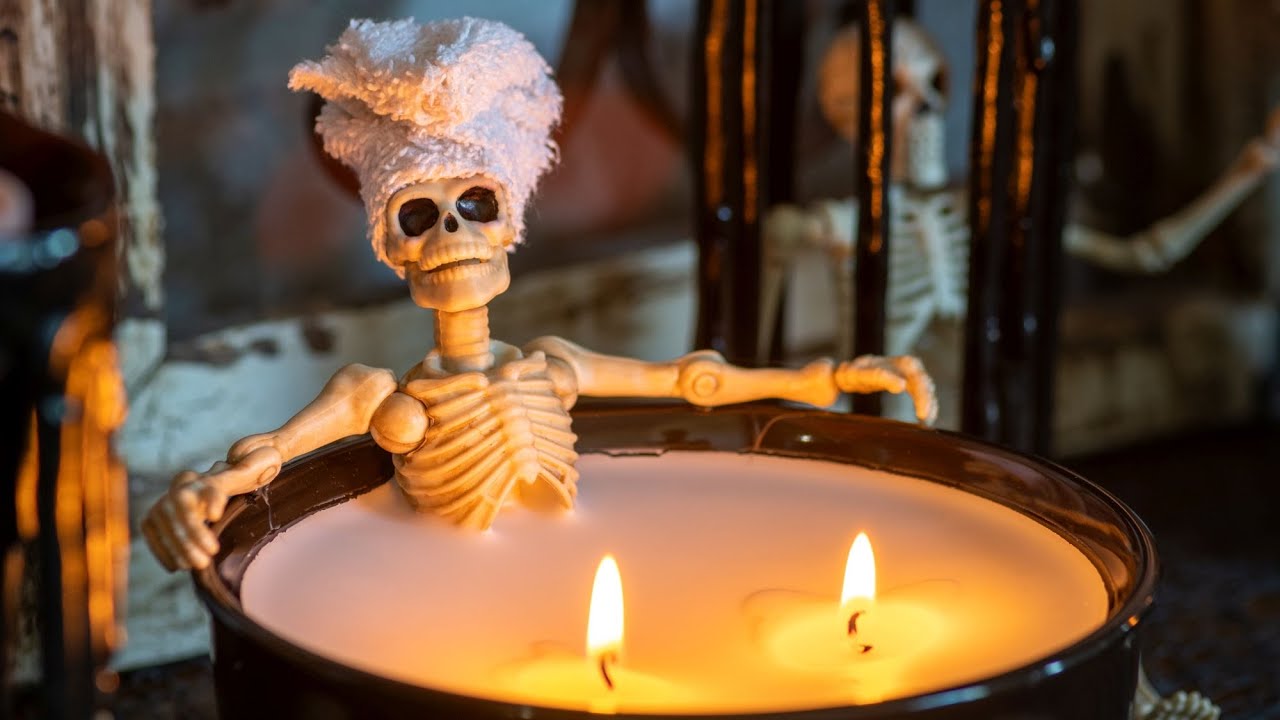
Candles play a significant role in Halloween traditions and celebrations, contributing to the spooky and mystical atmosphere associated with the holiday.
The most iconic use of candles during Halloween is inside jack-o’-lanterns.
Carved pumpkins with lit candles inside create an eerie glow and are often used to decorate homes, porches, and yards.
Recently, battery-operated LED lights have become a popular, safer alternative to traditional candles for illuminating jack-o’-lanterns.
Witches and cauldrons are popular Halloween symbols, and candles may be used to simulate the bubbling and mystical brew inside a witch’s cauldron. The flickering light adds to the enchantment.
Some people place lit candles in windows during Halloween as a welcoming or protective symbol.
This tradition is rooted in various cultures and is believed to guide spirits or protect against evil.
Candles can be incorporated into Halloween party decor, providing a warm and spooky glow.
Floating candles in bowls of water, candle lanterns, or clusters of candles can all contribute to the festive atmosphere.
Some people choose candles based on their colors and symbolic meanings.
For example, black candles are associated with mystery and protection, while orange candles represent warmth and celebration.
In celebrations like the Day of the Dead, candles are also integral to altars and ofrendas to honor and remember deceased loved ones.
Their soft glow is believed to guide spirits back to the world of the living. While candles are integral to Halloween traditions, it’s crucial to prioritize safety.
If using real candles, ensure they are placed in holders, away from flammable materials, and never abandon them.
17. Halloween Superstitions
Halloween is associated with various superstitions and folklore, contributing to the mysterious and spooky atmosphere of the holiday.
While many of these superstitions are rooted in historical beliefs and traditions, they are often embraced lightheartedly and playfully during Halloween.
Black Cats
Black cats are often associated with superstitions, both positive and negative.
In some cultures, black cats are considered symbols of good luck; in others, they are thought to bring bad luck, especially if they cross your path.
Jack-o’-Lanterns
The tradition of carving jack-o’-lanterns has its roots in folklore about a man named Stingy Jack.
According to legendary history, Jack tricked the devil and, as a result, was allowed into neither heaven nor hell.
He was condemned to roam the Earth with only a carved turnip and burning coal inside to light his way.
Witches and Brooms
It was once believed that witches could be cats, and superstitions suggested witches flew on broomsticks. This has contributed to the association of witches with Halloween.
Halloween Masks
Some superstitions suggest that wearing masks on Halloween can protect against evil spirits.
In ancient times, people believed that disguising oneself would help avoid recognition by wandering spirits.
Divination and Fortune-Telling
Halloween was traditionally a time when people believed they could divine the future.
Activities like apple bobbing, mirror gazing, and other forms of fortune-telling were thought to reveal insights into one’s fate.
Candles and the Spirit World
The belief that candles could help guide spirits back to the living world is reflected in using candles during Halloween.
Some people light candles in windows to symbolize a welcoming beacon for souls.
Avoiding Graveyards
Superstitions caution against entering graveyards on Halloween night, as spirits are believed to be more active during this time.
Halloween Costumes
The tradition of wearing costumes on Halloween has roots in the idea that disguising oneself could protect against evil spirits.
Souls were believed to be less likely to recognize or harm individuals in disguise.
Trick-or-Treating
The tradition of trick-or-treating has various origins, including “souling” in medieval England, where poor individuals would go door-to-door asking for food in exchange for prayers for the dead.
Omens and Signs
Some superstitions associate specific events or occurrences on Halloween night with omens or signs of future events.
These can include things like hearing certain sounds or encountering particular animals.
18. Haunted Attractions

The haunted attraction industry is a specialized entertainment industry that creates and operates attractions designed to provide visitors with a scary and thrilling experience.
These haunted attractions are typically open seasonally, focusing on the Halloween season.
The goal is to immerse visitors in a frightening and atmospheric environment. Haunted houses are one of the most popular facts about Halloween.
They are designed to simulate haunted or eerie environments, featuring dark corridors, themed rooms, special effects, and actors portraying frightening characters.
Escape rooms with horror or Halloween themes have become popular in the haunted attraction industry.
Participants must solve puzzles and complete challenges to “escape” from a themed scenario within a set time.
Also, they often incorporate advanced special effects, lighting, sound design, and technology to create a more immersive and terrifying experience.
This can include animatronics, virtual reality (VR), and other cutting-edge elements.
The haunted attraction industry also provides seasonal employment opportunities for actors, makeup artists, set designers, technicians, and other professionals.
Many individuals, especially performers with a passion for horror, are drawn to work in this industry during the Halloween season.
These attractions have become integral to their communities, attracting locals and visitors alike.
Some engage in community outreach, charity events, or partnerships with local organizations.
As one of the facts about Halloween, the haunted attraction industry continually evolves, with creators and operators seeking to innovate and provide new and more intense experiences; trends in horror cinema, pop culture, and technology often influence the direction of haunted attractions.
19. Fortune Telling
Fortune telling and divination have been associated with Halloween for centuries, adding mystery and magic to the celebrations.
Many of these practices have roots in ancient traditions, folklore, and superstitions.
Apple bobbing, also known as “dooking” in some regions, is a traditional Halloween game where apples float in a tub of water, and participants try to grab them using only their mouths.
In some traditions, the number of apples a person successfully retrieves is believed to predict future events or relationships.
Various divination games are played on Halloween, often involving mirrors, candles, and other props.
For example, staring into a mirror in a darkened room while holding a candle might reveal glimpses of one’s future spouse or provide insights into the coming year.
Tarot card readings are a popular form of divination, and Halloween parties sometimes feature tarot card readers who provide brief readings for guests.
Tarot cards are believed to offer insights into various aspects of a person’s life. Another folk tradition involves roasting pumpkin seeds and using them for divination.
Each seed might represent something specific (e.g., love, wealth), and the pattern in which the seeds pop or crack during roasting can be interpreted as a message.
In some traditions, individuals would jump over a broomstick during Halloween to gain insights into their future love life.
The height and ease with which the jump is made were believed to foretell aspects of romantic relationships.
Scrying involves gazing into a reflective or translucent surface to receive insights or visions.
Standard scrying tools include crystal balls, black mirrors, or water bowls. The practice is often associated with witches and mystical rituals.
The Ouija board, a tool for communicating with spirits, is sometimes employed during Halloween-themed events.
Participants ask questions, and the planchette moves to spell out answers believed to come from the spirit world.
Numerology, the study of the mystical significance of numbers, may be incorporated into Halloween fortune-telling.
Birthdates, the number of letters in a name, or other numerical elements may be analyzed for insights.
Some Halloween events feature psychic mediums who claim to communicate with spirits or provide insights from the other side.
These individuals may offer short readings or participate in séances.
20. Bats

Bats are commonly featured in Halloween decorations, such as hanging bat cutouts, bat-shaped lights, and spooky bat-themed garlands.
They add a creepy and atmospheric element to haunted houses and other Halloween displays.
Bat costumes are popular choices for Halloween. These costumes often include bat wings and ears, allowing people of all ages to transform into these flying creatures for parties and trick-or-treating.
In various cultures, bats have been associated with superstitions and folklore. At the same time, some traditions view bats as good luck symbols.
They are often linked to vampire folklore, where they are portrayed as companions to vampires or even shape-shifted vampires.
This connection to Gothic themes aligns with Halloween’s spooky and supernatural elements.
Some organizations use the Halloween season to raise awareness about bats and their importance in ecosystems. Educational campaigns may highlight the ecological role of bats as pollinators and insect controllers.
21. Harry Houdini’s Death
One of the facts about Halloween is the death of Harry Houdini, the renowned magician, escapologist, and stunt performer, who passed away on October 31, 1926.
Houdini, whose real name was Ehrich Weiss, died of peritonitis, which was caused by a ruptured appendix.
The circumstances surrounding his death were tragic and somewhat mysterious.
The events leading to Houdini’s death began on October 11, 1926, when he was punched in the stomach multiple times by a student while backstage in Montreal.
Houdini was known for his physical endurance and ability to withstand punches to his midsection, a feat he often showcased in his performances.
However, on this occasion, he was caught off guard and suffered severe abdominal pain afterward.
Despite the pain, Houdini continued with his performance schedule, and it wasn’t until October 24, 1926, that he sought medical attention.
By this time, he was seriously ill, and it was discovered that his appendix had ruptured.
Houdini underwent emergency surgery on October 27, but the infection had already spread, leading to peritonitis.
On October 31, 1926, Harry Houdini passed away at 52 in Grace Hospital in Detroit, Michigan.
His death was a significant loss to the entertainment world, and he is remembered as one of the most iconic and influential magicians in history.
The circumstances surrounding the punch in Montreal and its potential role in his illness and death have added an element of intrigue to Houdini’s legacy.
22. Halloween and the Guinness World Record
Halloween-related activities and events have been the subject of numerous Guinness World Records.
Various record attempts and achievements related to Halloween festivities, costumes, and themed events have been recognized by the Guinness World Records organization.
Carving massive pumpkins and creating intricate designs has led to records for the enormous pumpkin carvings.
Artists often showcase their skills during Halloween events to break records for the giant and most elaborately carved pumpkins.
Cities and organizations have attempted to set records for hosting the largest Halloween party.
This involves attracting many participants to a centralized location for a festive and entertaining Halloween celebration.
Additionally, attempts to set records for the most Jack-o’-lanterns lit simultaneously have been made during Halloween events. Participants carved and lit pumpkins to create an impressive display.
Some cities and communities organize Halloween parades to set records for the largest Halloween parade.
Participants dress in elaborate costumes and march through the streets to achieve the record.
Individuals or organizations with extensive collections of Halloween costumes have sought recognition for having the most comprehensive collection.
This may include costumes spanning various years and themes.
It’s important to note that records may be attempted and set in various categories related to Halloween, and the achievements may vary from year to year.
Guinness World Records regularly updates its database, and individuals or organizations interested in attempting records should follow the guidelines and procedures set by Guinness World Records for record verification.
23. Halloween and Caramel Apples
Caramel apples are also one of the facts about Halloween because they are a popular treat often associated with Halloween.
These delicious treats typically consist of apples, usually Granny Smith apples for their tartness, coated in a layer of caramel.
The caramel-coated apples are sometimes further embellished with various toppings, such as chopped nuts, chocolate drizzle, or sprinkles.
Caramel apples are a festive and sweet addition to Halloween parties. They can be served as a dessert or hands-on activity where guests can dip and decorate their caramel apples.
Some households may choose to distribute caramel apples to trick-or-treaters instead of or in addition to traditional candies.
However, it’s essential to consider safety and inform parents if whole apples are being distributed.
Many people enjoy making caramel apples at home as a fun and creative Halloween activity.
Families may gather to dip apples in warm, melted caramel and customize them with various toppings.
One of the facts about Halloween concerning caramel apples is that while they are delicious, they can be messy.
Many people enjoy the combination of the crisp, juicy apple with the sweet, chewy caramel coating, making caramel apples a delightful and seasonal treat associated with the Halloween festivities.
24. Different Religions and Halloween
Last on the list of facts about Halloween is that not all religions believe in and participate in it.
Christians often embrace Halloween, although not all Christians believe in the tradition.
Muslims, on the other hand, do not participate in Halloween celebrations as it is not recognized in their religion.
Halloween observance may vary among Muslims, and perspectives on the holiday can differ based on cultural, religious, and individual considerations.
However, it still doesn’t change the fact that it is frowned upon in the Islamic religion.
Additionally, Muslims have religious concerns about Halloween due to its historical roots and associations with pagan and Christian traditions.
Problems may include the celebration of supernatural or occult themes, which may be considered inconsistent with Islamic beliefs.
Alternative celebrations or events may be organized during Halloween in some Muslim communities.
These events may focus on promoting Islamic values, community building, or providing alternatives to Halloween activities.
It’s essential to recognize the diversity within the Muslim community and the importance of individual choice in religious matters.




